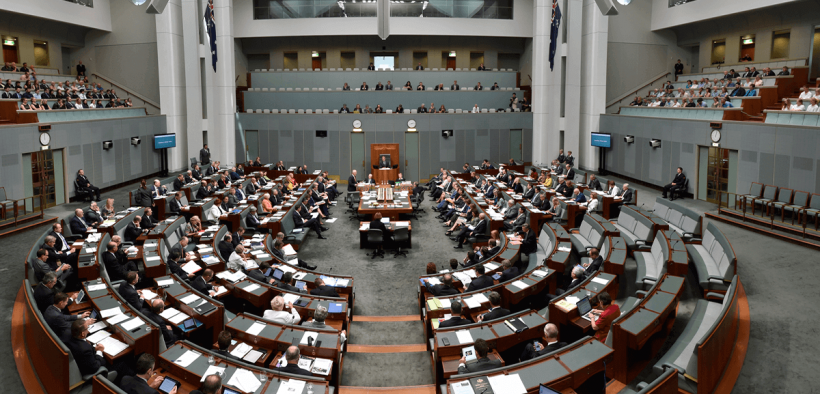AEC to announce final election results for the federal parliament
Share

The Australian Electoral Commission is a day away from announcing the final make-up of the federal parliament, with the declaration of the election resulting in the last of 151 lower house seats.
Following the recent election, Melbourne-based Cooper will be the final seat to be formally declared by the Australian Electoral Commission.
It is expected the result in the House of Representatives will be Labor holding 77 seats to the coalition’s 58, with 10 independents, four Greens, and the Centre Alliance and Katter’s Australian Party having one seat each.
The 47th parliament will open on July 26, which will be the start of the first fortnight of sittings. Parliament will return for two weeks in September, before the budget is handed down on October 25.
There are three weeks of sittings scheduled in November, before parliament rises for the year on December 1.
The Senate result was confirmed on Monday, with Labor having 26 seats in the 76-member upper house and the coalition opposition acquiring the 32 seats.
Labor will also need to deal with an enlarged crossbench made up of 12 Greens, two from One Nation, two from the Jacqui Lambie Network, along with one from the United Australia Party and independent Senator David Pocock.
In order to reach the 39 votes required to pass legislation, Labor would have to team up with the Greens and at least one more crossbencher.
Despite a more straightforward path for the government to enact its legislation compared to its predecessors, emeritus professor John Warhurst from the Australian National University said there would still be obstacles for the government.
“Labor will still have difficult negotiations with the Greens, but they also have at least the two Jacqui Lambie senators from Tasmania and they are always amenable to discussion,” he said.
“It will vary from issue to issue, but the government certainly has got a way forward as far as getting through the Senate is concerned.”
Victoria’s final Senate seat went to United Australia Party member Ralph Babet, who took the state’s sixth spot from Liberal Greg Mirabella.
Prime Minister Anthony Albanese said, while he did not know whether the UAP would support Labor legislation in the Senate, parliament often had unexpected outcomes.
“The parliament can be a funny place sometimes, and sometimes people will vote in ways that you sort of scratch your head,” he said.
“From time to time, you’ll get political parties vote in ways that are unexpected.”
Despite the election victory, Labor did not pick up any additional Senate seats.
Professor Warhurst said that while he was surprised Labor did not increase its standing in the upper house, the Senate had shifted in a more progressive direction.
“In some states, there was a swing against Labor, it may also be the fact that voters sometimes will vote for Labor in the lower house, but spread themselves more widely in the Senate,” he said.
While the coalition had the most Senate seats, Professor Warhurst said it was in a difficult position as the opposition would need the help of the government or the Greens in order to get a majority on the floor for a vote.
“They will have to play their cards very carefully. Maybe it will mean they will reach out to the Greens or even to Labor in some instances,” he said.
With AAP
Eliza is a content producer and editor at Public Spectrum. She is an experienced writer on topics related to the government and to the public, as well as stories that uplift and improve the community.










Today’s Pick
11th Annual Aus Goverment Data Summit
April 1, 2025
7th Annual NZ Government Data Summit
May 7, 2025
3rd Public Sector Comms Week
May 14, 2025
Subscribe
We send emails,
but we do not spam
Join our mailing list to be on the front lines of healthcare , get exclusive content, and promos.
AI appointment Australia Australian boost boosts business businesses covid-19 cyber cyber attack cybersecurity cyber security data data breach data management defence Digital employment enhance enhances fraud funding governance government grants infrastructure Innovation Lockdown management new zealand NSW NZ online privacy public Public Sector queensland renewable energy scams security Social Media Technology telecommunications victoria
-

Understanding and building your digital strategy
Digital Government, Opinion
-

Featured Leader: Jamie Morse on multi-channel strategies for communication
Communications, Featured Leader
-

Featured Leader: Tegan Tembe of NSW Treasury on creating solid planning strategies and processes
Featured Leader
-

Wirraka Maya Health Service improves patient care with My Health Record
Learning
Show More-

Effects of ineffective communication in the workplace
Communications, Personal Development
-

7 ways you can enhance your personal development skills
News, Personal Development
-

5 advantages of working in the public sector
News, Personal Development, Professional Development
-

7 causes of communication issues in the workplace
Communications, News, Personal Development
Show MoreLast Viewed